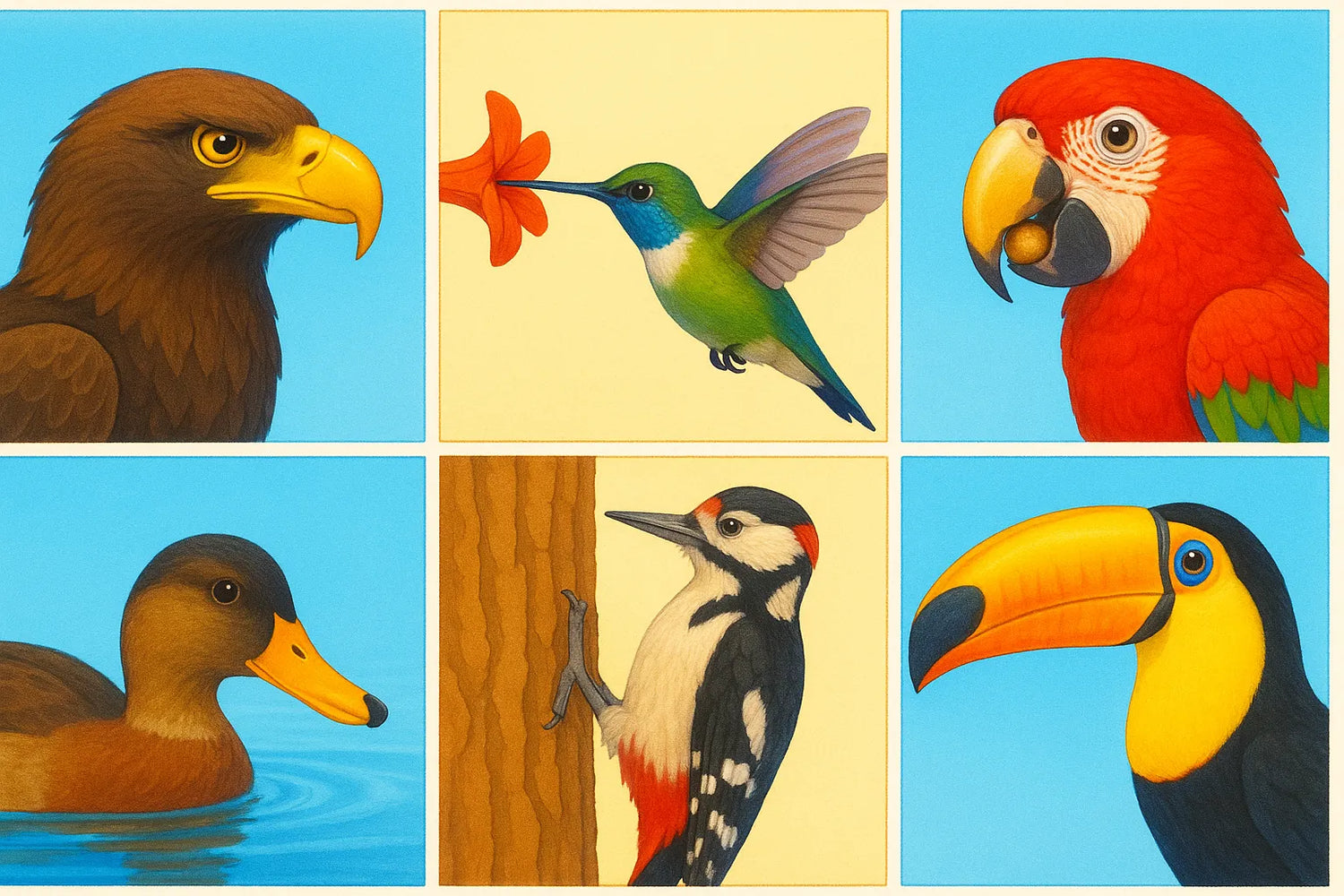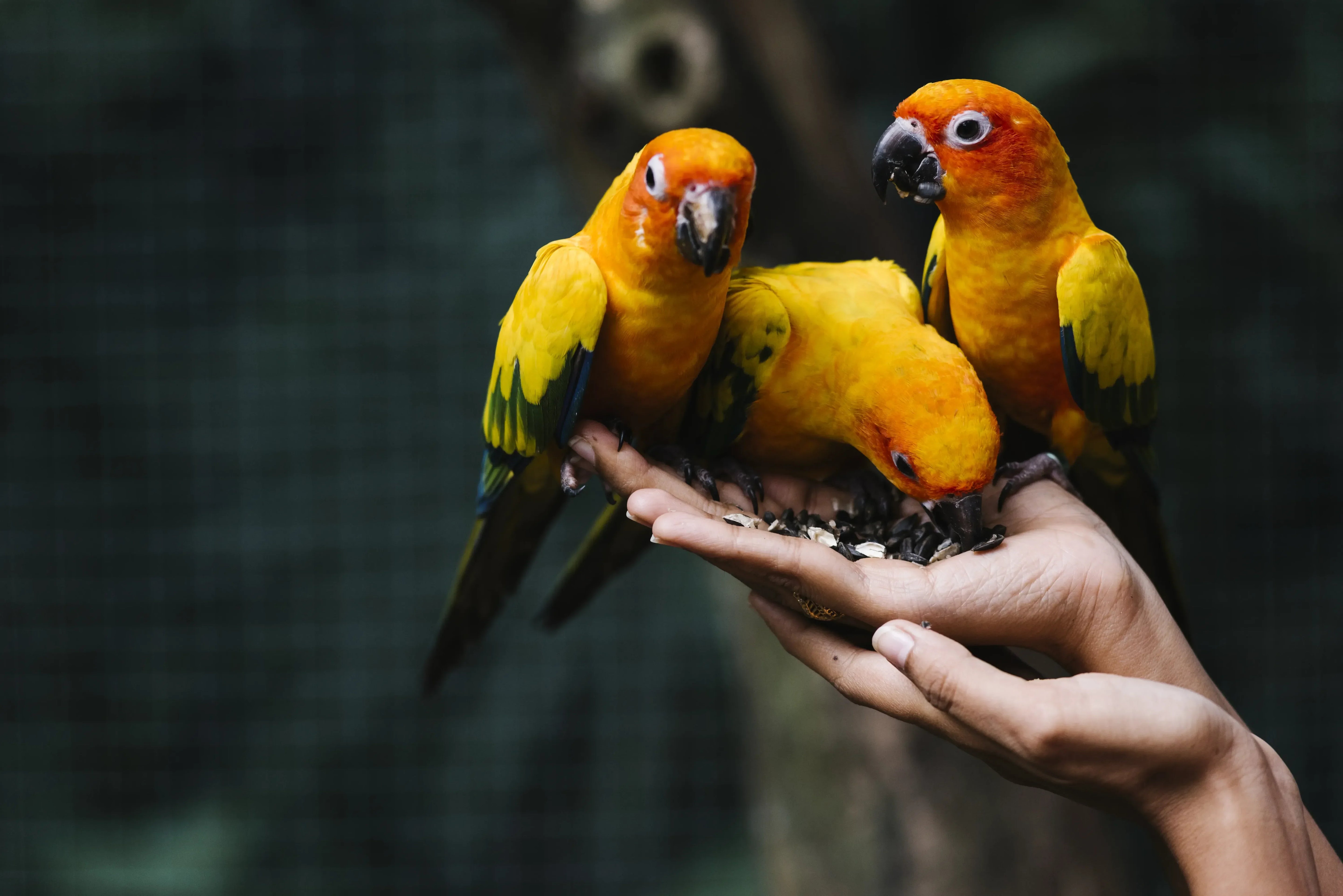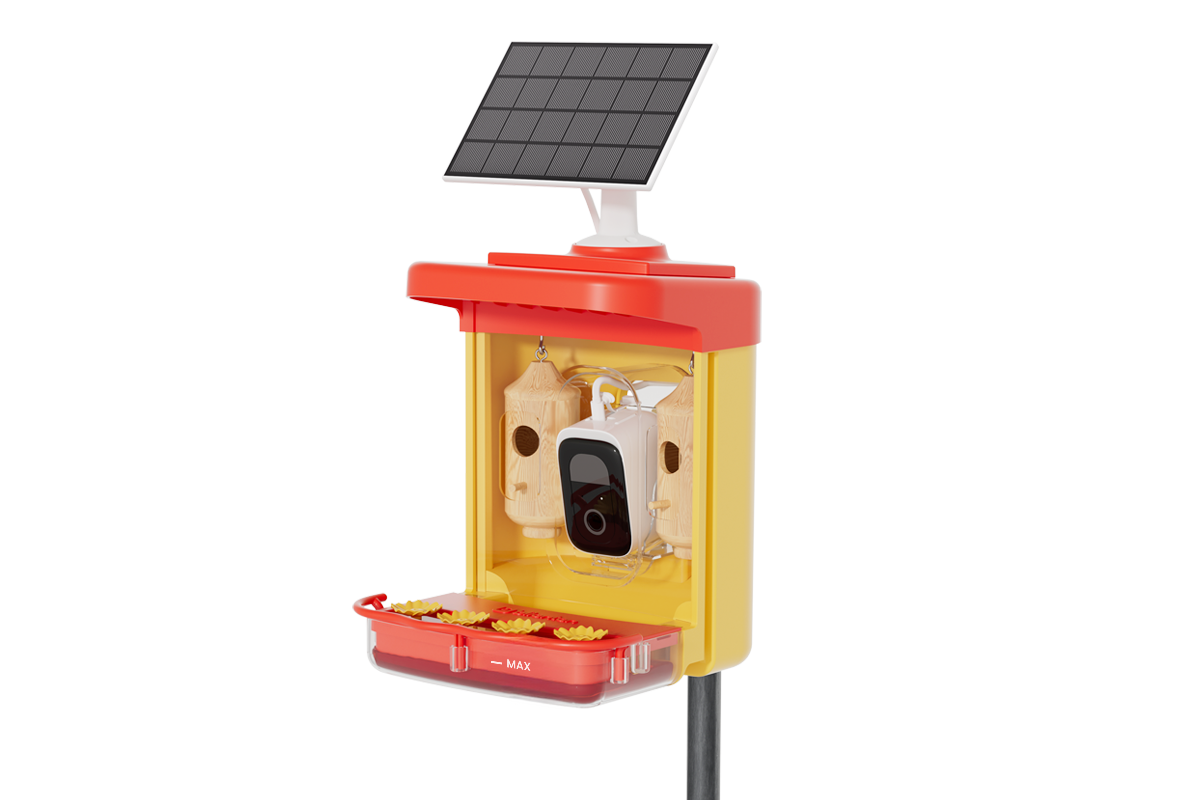Birds are some of the most fascinating creatures on Earth, and their defining feature—the beak—plays a central role in their survival. While feathers allow them to fly, it is the beak that helps them feed, build, communicate, and even symbolize meaning in different cultures. In this blog, we’ll explore the diverse world of beaked birds, understand how their beaks evolved, look at their many functions, and discover how you can observe these wonders right from your backyard.
🌍 The Evolution of Bird Beaks
The story of bird beaks is one of nature’s greatest evolutionary experiments. Over millions of years, birds adapted their beaks to survive in different environments. A famous example is Darwin’s finches in the Galápagos Islands: some developed short, thick beaks for cracking seeds, while others evolved long, slender beaks to reach nectar deep inside flowers.
This remarkable adaptability shows how the shape and size of a beak directly influence a bird’s survival. Beaks are not just tools—they are evolutionary solutions crafted by food availability, climate, and competition.
🍽️ Beaks as Feeding Tools
When we think of beaks, the first function that comes to mind is feeding. But the variety is extraordinary:
- Seed eaters like finches and sparrows have short, conical beaks perfect for cracking shells.
- Nectar feeders like hummingbirds have long, thin beaks that act like straws to sip nectar.
- Carnivorous birds such as hawks and eagles have sharp, hooked beaks for tearing flesh.
- Filter feeders like flamingos use their unique beaks to sift tiny organisms from water.
Each beak type reflects the bird’s diet and niche in the ecosystem, making them perfect examples of adaptation in action.
🛠️ Beyond Feeding: Other Functions of Beaks
Beaks aren’t just for eating—many birds use them in surprising ways:
- Nesting: Some birds use their beaks to carry twigs, mud, or grass to construct nests.
- Preening: Beaks are essential for grooming feathers and keeping them waterproof.
- Communication: Beak color, size, and even movements can signal health or attract mates.
- Defense and Competition: Strong beaks serve as weapons when birds fight over territory or mates.
These functions reveal that beaks are multi-purpose tools essential for daily survival.
🦅 Iconic Examples of Beaked Birds
- Parrots: Known for their curved, powerful beaks, perfect for cracking nuts and seeds.
- Toucans: Famous for their oversized, colorful beaks, used both for feeding on fruit and for regulating body temperature.
- Woodpeckers: Equipped with chisel-like beaks designed for drilling into wood to find insects.
- Pelicans: Their massive beaks and throat pouches are ideal for scooping fish from water.
- Eagles and Hawks: Predatory birds with sharp, hooked beaks made for hunting and tearing meat.
✨ Cultural and Symbolic Meanings of Bird Beaks
Beaks are not only practical but also symbolic. In many cultures:
- Eagles’ hooked beaks represent strength and authority, often used in national emblems.
- Cranes with slender beaks symbolize longevity and peace in Asian traditions.
- Parrots’ colorful beaks are linked to vibrancy, playfulness, and communication.
This cultural dimension reminds us that humans have long admired and drawn meaning from the shapes of bird beaks.
👀 Observing Beaks in Your Backyard
You don’t need to travel the world to appreciate the diversity of beaks. By setting up a bird feeder in your backyard, you can watch how local species use their beaks:
- Finches cracking seeds.
- Woodpeckers drilling for suet.
- Hummingbirds sipping nectar.
With a smart bird feeder camera, like those offered by Bilantan, you can capture these behaviors up close. Our feeders let you see not just what birds eat, but also how their beaks shape their behavior. Every visitor tells a story through the way they use their beak—whether it’s nibbling seeds, grooming feathers, or building a nest nearby.
🙌 Why Beaks Matter
Bird beaks are nature’s proof that design follows function. Each curve, size, and color reveals how a species has survived and thrived. By watching birds in your garden, you gain insight into their daily struggles and adaptations, deepening your connection with nature.
And with the help of Bilantan smart feeders, you can transform your backyard into a living classroom—one where the fascinating world of beaked birds comes into focus.
❓ FAQ: Beaked Birds
Q: Which bird has the strongest beak?
A: The hyacinth macaw has one of the strongest beaks in the bird world, capable of cracking open Brazil nuts with ease.
Q: Why do some birds have curved beaks?
A: Curved beaks, like those of parrots or raptors, are adapted for gripping and tearing food—whether that’s nuts or meat.
Q: Can a bird survive if it damages its beak?
A: Mild beak injuries often heal, but severe damage can threaten survival, as birds rely heavily on their beaks for feeding and grooming.
Q: Do beaks keep growing throughout a bird’s life?
A: Yes, bird beaks grow continuously, similar to human nails. Birds naturally wear them down through feeding and grooming.
Q: What is the longest beak in the bird world?
A: The Australian pelican holds the record, with a beak that can reach over 15 inches in length.




Leave a comment
All comments are moderated before being published.
This site is protected by hCaptcha and the hCaptcha Privacy Policy and Terms of Service apply.